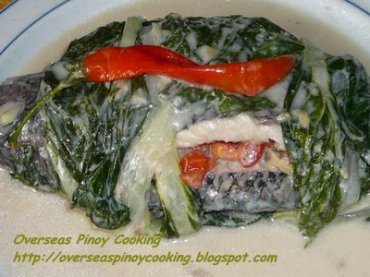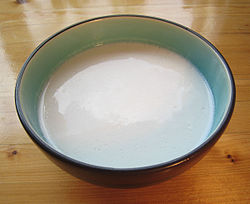It was a different experience to try the Bicolano delicacies: a confection of recipes maneuvering to spicy taste perception and tenderness of the meat being added. The unusual mixture of tastes was an accumulation of knowledge for me, its was as if I made myself “belong” to the culture of the place.
The most common Bicolano delicacy is the Sinilihan, usually called “Bicol Express” named after a train wagon by a child, according to it’s history. When I placed all the puzzle pieces to this experiment, I realized that they invent recipes with a kick of spice because of their geography. The Bicol region is an encompassing fenland with numerous parts of grassy vegetation, farmlands and watery constituents. From the following details, the mutual occupation will be agriculture which includes herding, farming, breeding, hunting and the like. The supposed spicy food will then be cooked to cast heat in their bodies which will be against the cold winds that they usually experience in the region. Sinilihan is generally made up from pork, chili pepper, and coconut milk together with onions and garlic. It is very similar to the other Bicolano formulas namely “Laing” and “Sinanglay na Tilapia”. Laing, however, is a dish whose origin is attributed to the Bicol region where coconut milk figures prominently in the local cuisine. It has many versions across the country from cream to dry and to heavily cooked. The delicacy, generally made from Taro leaves and coconut milk that serves as a creamer, is not a spice – filled mixture compared to the Sinilihan. I will believe that this is the contribution of the Bicolano’s to the vegans out there. Last dish is “Sinanglay na Tilapia” which is a Bikol way of cooking tilapia in coconut milk. The fish is stuffed with chopped onions, tomatoes, ginger, libas leaves, tanglad or lemongrass and wrapped in banana or pechay leaves. Libas is a kind of tree, the leaves are use for souring in cooking Bicol dishes like laing and fish. These three inventions are the direct representation of how they live and what do they actually have, but it is amazing that the production of primitive elements in a mixture with both spice and milk, even the two are in opposite levels of taste, controls the perception of its recipient. I didn’t expect that they could formulate such contradicting apprehension and to think, it was an extremely unexpected to get it from traditional people during the time they were formulated. The delicacies were a concoction of experimental tastes that were surprisingly “incompatible” until you taste them. The taste remains a question to those who never tried each recipe. The spice and chili pepper with coconut milk leaves an impression of being wild and too strong; however, since coconut milk serves as the “leveller” for the intensity of the spice. Coconut milk, one of the primary ingredient of each delicacy of the region, is a common ingredient in many tropical cuisines, most notably those of Southeast Asia (Philippines). It is important in dishes: the coconut flavor is not competing with curries and other spicy dishes; it is also used as a vegan base for many alternatives/substitutes of traditional dairy products. The part where the Bicolano’s submerged the spice and the coconut milk as the controller and creamer for their food was the only thing that dazzled me: knowing two different flavors cannot be easily mixed because of their differences: it made me more mature in thinking that a combination can also be the extremes of different sides.
I personally tried the Sinilihan and experienced how to cook it. I would say, it was unexpectedly good in terms of taste and the combination of the flavors. The dish itself was not hard to cook but it tastes really great especially when added with vegetables like Sitaw and Okra as add – on ingredients. Originally, it doesn’t have vegetables, garlic and siling panigang: these were the ingredients that I added to have more taste and to complete my own recipe for the dish. In my opinion, it is better for it to have vegetables and a different kind of meat, beef to be specific. The Laing was not presentable though in terms of visuals: it looks like a clump of dark fallen leaves soaked in a dirty, watery yogurt but it was the dish that smelled really really great and when I say its great, believe me when Laing is served fresh and hot in front of you, the taro leaves smothered in creamy coconut milk is oozing with temptation to its recipient with implied messages through smell: “Eat me now, and taste the creamy leaves of Bicol..”. Laing was a real tasty vegetable dish from the region, though I would recommend to add meat to it as “sahog” (term for added ingredients) but don’t let the meat dominate the dish. Laing is not hard to cook: it only takes thirty to forty – five minutes until it can be served. It doesn’t demand many ingredients for it to be kicking with tastes, only the combined taste of the leaves and the coconut milk. Sinanglay na Tilapia is the dish I tried in Camarines Sur in CWC: served at a price of PHP150.00, It was served after 15-20 minutes of waiting. The dish was not that good though it “attempted” the taste of combined Laing and Sinilihan. The saltiness of the fish is not fit for the flavor of the coconut milk in this. I didn’t like it as much as I appreciated both the first two dishes, though the taste became neutral when added with vinegar. In the most common kinds, the dish is noticeably tasty just because of the shrimp paste (alamang) added in to it, not the fish and the vegetable themselves. The fish is smoked with tomatoes and spices wrapped in banana leaves, it will then be added with the usual Bicolano style ingredients with creamy coconut milk after the first process. I would describe this last dish as mature, it gives me the status symbol of being the dish for the intellectual and influential Bicolano’s because of its infused influences from predecessor delicacies . I was not a fan of delicacies with coconut milk but these set of experimental ingredients made me like them. I would say that what they formulated were dishes with own integrity and historical value: simple dishes they might be but the story behind them forms lively deconstructions that explains how much a Filipino’s worth is.
The three simple Bicolano dishes that dictates their lifestyle because of this local cuisine, doesn’t only portray the Bicol region itself; rather, the whole Filipino nation wanting to submerge the aliens outside what is really in our country. These experiments/inventions were dictating representations of what we can do and what are we capable of doing. We are not mediocre nor simple and average: we find things that even extremely in opposite situation and level of aesthetics, can be combined as long as it can be controlled. These sample cuisine taught me one great, unforgettable lesson in design:
“Two different bodies may be embedded with impossibilities of joining; however, they are actually indifferent if you have the disciple of controlling each other by unleashing their utilitarianism independently.”
“As long as they hold each other for a final design touch, they can be unbreakable if put together in a design process, hot or cold.”
I will still adhere to my philosophies that simplicity is being lively, even with usual delicacies and basic forms of art.




